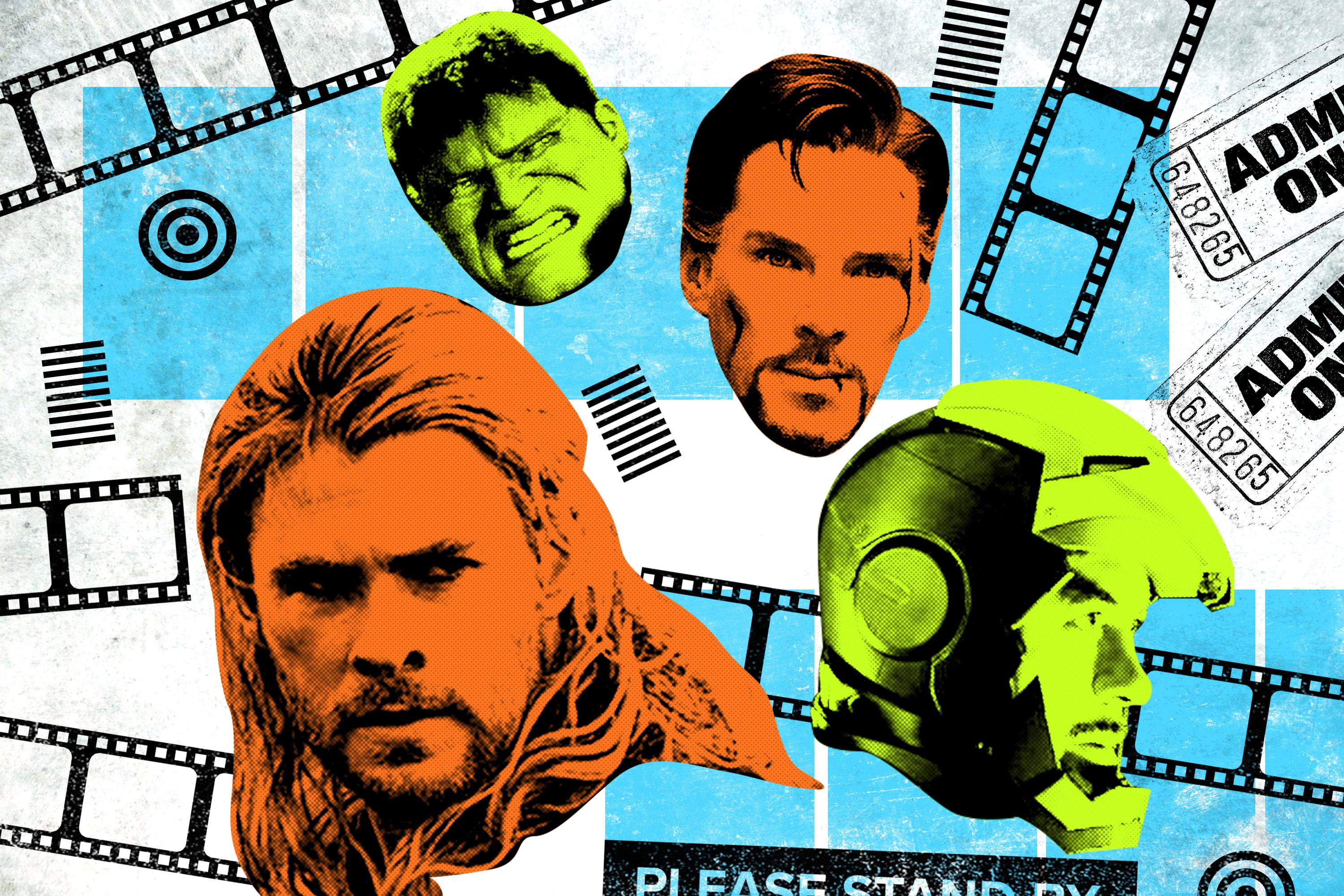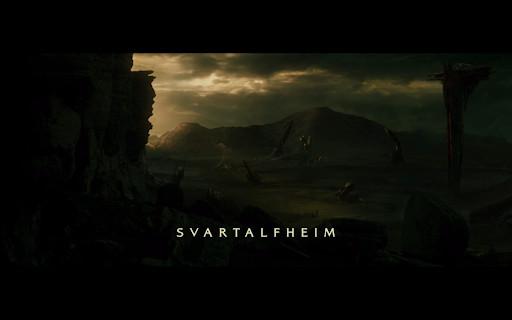
Who you really ought to fear, when confronted with each new chapter in the Marvel Cinematic Universe, is not Ultron, or Red Skull, or Malekith, or Aldrich Killian, or Kaecilius, or the Vulture, or King Killmonger, or even Thanos himself. Do not fear the villains; fear their convoluted backstories. Fear whoever’s doing the voice-over. Fear the voice-over itself.
On Friday, Captain Marvel—the 21st film in the MCU, the first one set in 1995 (or starring a woman), and the second installment since (spoiler alert?!) Thanos murdered literally half the universe’s population in 2018’s Avengers: Infinity War—swoops in to rescue a moribund 2019 box office and confound a grateful public anew. A tiny but lamentably vocal faction of this movie’s target audience can’t get past the whole “starring a woman” part and is raising the same bullshit ruckus kicked up by Star Wars: The Last Jedi or the 2016 Ghostbusters reboot. The only tangible result of that backlash is that Rotten Tomatoes will no longer let angry dudes give negative reviews to movies they obviously haven’t seen yet, which was apparently a thing you used to be able to do.
Forget all that. We’ve got other, actual problems. Brie Larson, a.k.a. Carol Danvers, a.k.a. Captain Marvel, is not your enemy. Her costars in this film, two warring alien races known as the Kree and the Skrulls, aren’t your enemies either. The fact that Captain Marvel involves two warring alien races is your enemy. The fact that someone (maybe Larson herself, maybe Samuel L. Jackson, maybe, I don’t know, Jerry Seinfeld, just to drive home the ’90s of it all) will have to spend the movie’s first 20 minutes painstakingly explaining the whole deal with the Kree and the Skrulls—that’s your enemy. Every time the MCU goes to space or an alternate dimension or whatever, the plot gets awfully convoluted, the connective tissue between all these heroes gets awfully strained, and the air gets awfully hard to breathe.
The line between precise, instantly enthralling world-building (see 2008’s MCU-launching Iron Man) and bumbling-ass exposition (see 2013’s Thor: The Dark World, in which absolutely nobody feared the Dark Elves) is thin indeed. Comic book movies can be transcendent, or they can be … comic book movies. Captain Marvel has an awful lot to contend with, to connect to, to answer for. So many backstories to sketch out, so many existing plot threads to weave together. It gets exhausting. It’s a small wonder that all these movies don’t sound exhausted. Every new chapter takes that risk.
What constitutes a Bad Marvel Movie? In the innumerable “Every Film in the MCU, Ranked” lists on the internet, the same handful tend to cluster near the bottom, and they are mostly wobbly early efforts (2008’s mostly discarded The Incredible Hulk) and/or the early sequels (2010’s Iron Man 2, or for that matter 2013’s Iron Man 3). Other less-beloved flicks get dinged for being too unwieldy (2015’s Avengers: Age of Ultron), too frivolous (2015’s Ant-Man), or both (2017’s Guardians of the Galaxy, Vol. 2). Now that these movies are often as beloved critically (see 2018’s righteous Oscar contender Black Panther) as they are commercially (Infinity War made $2 billion worldwide), it’s time to revisit the criteria and to redefine the exacting standards to which Captain Marvel will be held. “It’s hard to explain,” Larson says, in a trailer that begins with her falling out of the sky and through the ceiling of a Blockbuster Video. Tell us about it. But make it quick, and try to make it make sense.
The good news is that the Byzantine voice-over in 2011’s Thor is provided by Odin, which is to say by Sir Anthony Hopkins, who is cashing a check but taking the check-writers seriously. The bad news is that he drops us in Tonsberg, Norway, in 965 A.D., with a 12-part Ken Burns documentary’s worth of clunky science to drop about Asgard, the Frost Giants, the Realm Eternal, the Destroyer, Laufey, and Jotunheim. Some of this is legit Norse mythology; much of it is not. The whole point of a comic book movie, really, is to revel in this sort of fantastical tale-spinning, ideally wedded to some semblance of reality and yet utterly ridiculous. A little goofy exposition is totally necessary. (Goofy exposition is the very lifeblood of Game of Thrones, after all.) But too much, too awkwardly delivered too quickly, is fatal.
The three Thor movies are an object lesson in how the MCU can get much worse, but then suddenly much, much better. From the onset, a huge part of our hero Chris Hemsworth’s appeal (aside from the abs) is his pompousness, his stoned smile in service of sub-Shakespearean wit, the way various proclamations like “It is forbidden!” and “You are unworthy of these realms!” and “Father has fallen into the Odinsleep!” fall off various other tongues like period-appropriate bowling balls. As stuffy as this particular corner of the galaxy is, and as violently CGI’d as Thor’s homeland of Asgard might be (it’s basically God vs. Alien vs. Predator), it’s still quite impressive to watch Hemsworth woo Natalie Portman by yammering on about the nine realms linked by the branches of Yggdrasil. Definitely his Rainbow Bridge is a close second, radness-wise, to Super Mario Kart’s Rainbow Road.
But Thor: The Dark World is all bad news from the moment you hear Sir Anthony Hopkins say the words “the Dark Elves.” FOH, Odin. Let’s agree to agree with the vast majority of those listmakers that this movie is the very bottom of the barrel, which might indeed still make it preferable to several films in the DC Extended Universe, but still, sheesh. It’s a lethal combination of dour and silly; everybody’s just killing time and honoring contracts. I get that this is, per Norse mythology, a real place, but it’s also the funniest frame in the whole movie:

And yet, let’s go on to agree that 2017’s Thor: Ragnarok, directed by sublime goofball Taika Waititi, might sneakily be the very best film in the MCU, or at least the funniest. (The director of any given Marvel movie doesn’t always matter, but when it matters—see Ryan Coogler’s Black Panther or even Joss Whedon’s crisp The Avengers—it really matters.) You will not see a better or more loving parody of corny superhero-movie exposition than Ragnarok’s marvelous opening scene—the way that the grouchy fire demon growls, “It’s a crown!” gets me every single time. Ragnarok is a shocking improvement on and indictment of its predecessors: Hemsworth, now with multiple overstuffed but jovial Avengers movies under his belt, has loosened up, witty but not oppressively so, having calibrated precisely how seriously to take all of this. (Not very.) It’s almost shocking, the way Jeff Goldblum undoes but also redeems multiple movies’ worth of overbearing Asgard lore simply by pronouncing it Ass-Guard.
That the Iron Man mini-trilogy doesn’t likewise end on a high point is mostly a testament to the sure-handedness of Jon Favreau’s 2008 original. Robert Downey Jr.’s lovable-yet-arrogant-playboy routine as Tony Stark is the gold standard to which all other lovable-yet-arrogant playboys are held, and the sheer loopiness of the suit-testing scenes, from “Yeah, I can fly” to the three-story pratfall that follows “Kill power,” is unmatched within the MCU and also beyond it. Iron Man 2 (also Favreau) and Iron Man 3 (directed and cowritten by Shane Black, who indeed turns it into a grittier and crasser Predator-type situation) merely offer the diminishing returns of plain old sequel-itis, back when the MCU was still small enough to suffer from so pedestrian a malady.
This results in undercooked villains (Mickey Rourke’s Ivan Vanko doesn’t have much to do beyond stand around looking like the lead singer of Monster Magnet), cute but mouthy kids (a Shane Black crutch), and an emphasis on Tony Stark’s increased mental strain that telegraphs the narrative strain on his movies. In Iron Man 3, he suffers multiple panic attacks brought on by the interstellar calamity he encountered in the first Avengers movie, a tacit acknowledgement of how complex and intergalactically overwhelming the MCU had already gotten. “You experience things, and then they’re over, and you still can’t explain them,” he laments. “Gods, aliens, other dimensions. I’m just a man in a can.”
Even an outright failure like 2008’s The Incredible Hulk has a throwback charm now, earthbound and coherent even in its relative corniness. Edward Norton does his best to bring a Serious Actor gravitas to the role several years too early and partially succeeds—like Iron Man’s poor Terrence Howard, alas, he wasn’t long for this universe, to the benefit of all—while Liv Tyler tries to liven up her stereotypical damsel-in-distress role as his love interest and mostly fails. (All her dialogue is either whispered or screamed.)
But it’s almost soothing that this movie has basically no remaining tether to the rest of the MCU: Its lack of ambition scans as a relief now that every last superhero movie has to be a world-conquering monolith but also another link in the chain. Captain America: The Winter Soldier, from 2014, marked the Marvel pivot from Trashy Fun to Serious Art, described constantly and somewhat ridiculously as a “paranoid ’70s thriller.” Every film since has at least aspired to be A Singular Event even amid such superhero overload. But there is a bittersweetness in leaving the simpler man-in-a-can years behind.
Another huge challenge Captain Marvel faces, of course, is that it must seamlessly introduce a new character—one probably unfamiliar to the millions of MCU stans who’ve nonetheless never cracked a comic book—to a rambling tale already 20 movies deep. It’s easy enough to drop the umpteenth iteration of Spider-Man into the fray, but plenty of those irritable listmakers found Paul Rudd’s Ant-Man a poorer fit, the stakes of his two stand-alone movies tinier to the point of being inconsequential. But that’s exactly what makes him so essential: When the fate of the known universe doesn’t hang in the balance, you’re free to focus on inspired tomfoolery like a suitcase fight set to the Cure’s “Plainsong,” or the defiant lightheartedness of 2018’s Ant-Man and the Wasp, which peaks when Walton Goggins jumps screaming out of a chair at the sight of an invisible lady. Coming less than three months after the maudlin dirge of Infinity War, it’s pointless to a degree that also makes it priceless.
The MCU movie I’m surprised not to find lurking near the bottom of those lists is 2016’s Doctor Strange: It includes a relatively obscure character, a profoundly headache-inducing reliance on mirror dimensions and astral planes and the like, and Benedict Cumberbatch doing a rather familiar asshole-genius routine. “Stubbornness, arrogance, ambition,” Tilda Swinton gravely intones. “I’ve seen it all before.” Likewise! The daffy head-trip visual style, like Inception with more capes and less gravitas, certainly sticks with you, and this is certainly the first action movie I’ve seen whose final battle involves a time loop. It is also, hopefully, the last.
Maybe the larger problem here is that the Guardians of the Galaxy wing of the MCU, full of wacky Technicolor aliens and mean dads who are also planets, still feels like an artificial limb the host body hasn’t quite accepted. It’s very hard to conceive of your friendly neighborhood Spider-Man and Bradley Cooper the gun-toting racoon as occupying the same universe, a grim triumph of corporate synergy over logic, even superhero-movie logic. It’s all too much. There are simply too many Marvel characters occupying too many astral planes simultaneously for this whole enterprise not to feel unwieldy to the point of inert, and Captain Marvel feels like an already snakebit attempt to cram just one more body into the elevator. This is like a boy band with 10,000 people in it. I’m glad to see another woman liven up the mix. But overpopulation is the bigger issue.
One last task for Captain Marvel, alas: Be low-key enough to have gone this long without your own movie, but still be powerful enough to beat Thanos. Yes, a franchise whose runtime is approaching the 48-hour mark is only now unveiling its most powerful superhero yet. Good timing. I am rooting for her, and so are you. Killing half of all the superheroes in the known universe is certainly villainous behavior. But the impulse is understandable.

